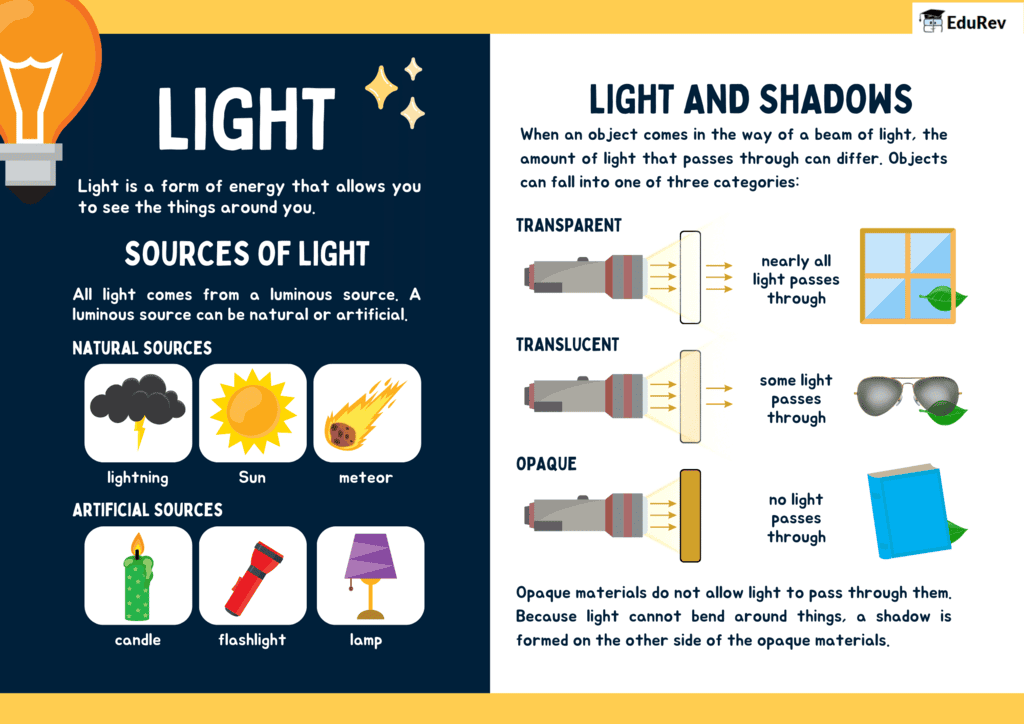Class 7 Exam > Class 7 Notes > Science Class 7 (Old NCERT) > Infographics: Light
Class 7 Science Chapter 11 Infographics - Light: Shadows and Reflections

The document Class 7 Science Chapter 11 Infographics - Light: Shadows and Reflections is a part of the Class 7 Course Science Class 7 (Old NCERT).
All you need of Class 7 at this link: Class 7
|
111 videos|286 docs|28 tests
|
FAQs on Class 7 Science Chapter 11 Infographics - Light: Shadows and Reflections
| 1. What is light and how does it travel? |  |
Ans. Light is a form of electromagnetic radiation that is visible to the human eye. It travels in waves and can move through a vacuum, as well as through various media such as air and glass. The speed of light in a vacuum is approximately 299,792 kilometers per second (186,282 miles per second).
| 2. What are the different types of light? |  |
Ans. Light can be categorized into several types based on its wavelength. The electromagnetic spectrum includes radio waves, microwaves, infrared, visible light, ultraviolet, X-rays, and gamma rays. Visible light is the portion of the spectrum that humans can see, consisting of colors from red to violet.
| 3. How do we perceive light? |  |
Ans. Humans perceive light through the eyes, which contain photoreceptor cells called rods and cones. Rods are sensitive to low light levels and help with night vision, while cones detect color and detail in brighter light. The brain processes signals from these cells to create images and perceive brightness and color.
| 4. What is the importance of light in daily life? |  |
Ans. Light is crucial for various aspects of daily life. It enables vision, supports photosynthesis in plants, which is essential for the food chain, and influences human health by regulating circadian rhythms. Additionally, artificial lighting allows for activities during nighttime and enhances safety.
| 5. How does light interact with different materials? |  |
Ans. Light can interact with materials in several ways: it can be absorbed, reflected, refracted, or transmitted. The interaction depends on the properties of the material and the wavelength of the light. For instance, a transparent material like glass allows light to pass through, while opaque materials like wood absorb or reflect light.
Related Searches
















